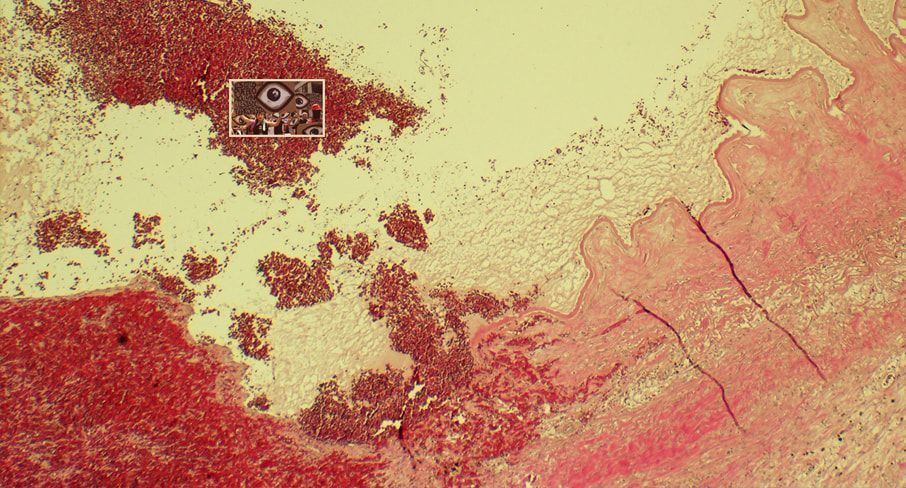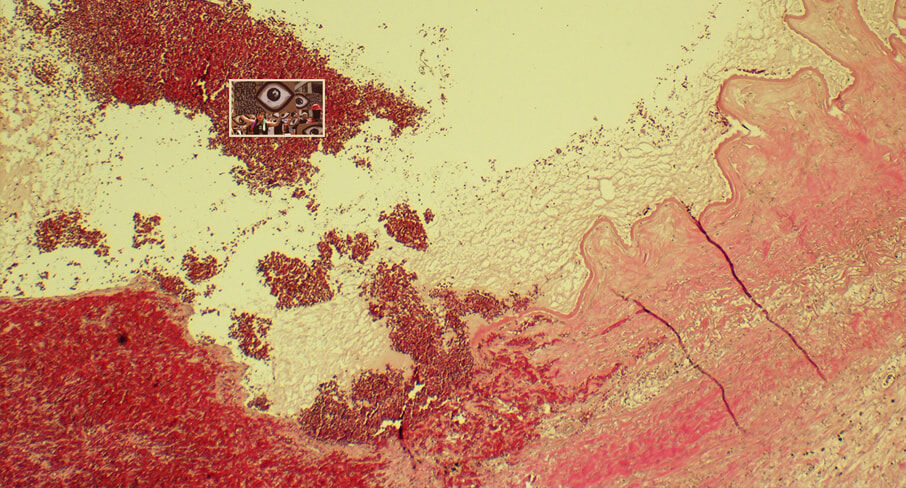Art + Tech Director, Curator, Writer, Publisher
Office address: mm:museum [Media Majlis] @ Northwestern Qatar, Education City, Doha, Qatar
- CuratorWork / CuratorView is an artsphere website
Seeing Through the Affects of Violence. Part 2 @ Künstlerhaus Büchsenhausen
Using various media such as photography, film, installation and text, Mykola RIDNYI’s artistic practice employs historical research methods and the investigation of current political events. Ridnyi counters the sensational visualization and aestheticization of brutality with a distanced critical approach by addressing the representation of violence without its reproduction. In the post-truth era, facts have to be constantly checked, but the traditional way of presenting information needs to be questioned as well. Is there still a space for trust in both critical journalism and socially engaged art? In the second edition of a discussion series in the context of his Fellowship in Künstlerhaus Büchsenhausen, the artist talks with Natalia GUMENYUK, Ukrainian journalist, author, and founder of the Public Interest Journalism Lab, and Alfredo CRAMEROTTI, author, curator, and director of MOSTYN Contemporary Art Centre in Wales about the contradictions and similarities in the visual approaches of artists and journalists.
The broadcasting of violent images has always been at the core of the news business, the media’s modus operandi. However, with the invention of 24/7 TV cable news in the 1990s, and the later appearance of social media and live-streaming, the global audience is constantly exposed to a multitude of images of violence of both domestic and international conflicts. While the commercialization of news forces journalists to edit news videos in a way that resemble action movies, the normality of human existence is cut out to keep the audience hooked by better selling visuals. In her talk, Natalia GUMENYUK will address the following questions: is it at all possible to ‘un-edit’ the world we see in order to put violence in its place? Are we ready to sacrifice the aesthetics of violent and emotional imagery to bring back a raw version of reality at the risk of being boring?
In his book Aesthetic Journalism, Alfredo CRAMEROTTI describes different strategies of the interaction of aesthetics and information, such as witnessing, interactivity, hijacking and disclosing. He claims that ’aesthetic journalism works by combining documents and imagination: the necessity of the former and the desire of the latter [sic], since desirability is almost an antidote to the often senseless accumulation of information’. In his talk, Cramerotti will explore how the artist can find ways to ’import’ journalism into art and reintroduce an artistic approach to the information industry. The talk will posit a reflection on the concept of public opinion – does it work as an aggregate, and is it open to critical understanding?
PLEASE NOTE: This is a hybrid event. Up to 17 people can participate in the event in Künstlerhaus Büchsenhausen. Participating in the event on site is possible only in accordance with the current legal COVID-19 regulations. In addition, the event will be streamed. If you would like to directly participate in the discussion, please register via Eventbrite. You will receive the Zoom link automatically. Otherwise, you will be able to follow the event on Facebook.
Current information on events taking place at Künstlerhaus Büchsenhausen in the context of the exhibition Transgressions of the Real can be found on our website.
Participants:
Mykola RIDNYI is an artist, filmmaker and essayist based in Kyiv, Ukraine. He works across media, ranging from early political actions in public space to the fusion of site-specific installations, photography and the moving image which constitute the current focus of his practice. In recent films he experiments with nonlinear montage, and a collage of documentary and fiction. His way of reflecting social and political reality draws on the contrast between fragility and resilience of individual stories and collective histories. A connection with alternative times and phenomena, the influence of the past to the present and future, and the pressing polemic of manipulating historical memory born out of contemporary political agendas are among the main issues revealed in his engagements, initiatives, and projects.
Ridnyi has been a founding member of the SOSka group – an art collective originated from Kharkiv, Ukraine. He is a contributing editor of Prostory, an online magazine about art and society. His works has been exhibited in Venice biennale for contemporary art, The School of Kyiv – Kyiv biennale, Pinakothek der Moderne in Munich, daad galerie in Berlin, Transmediale in Berlin, Zentrum fur Kunst und Media in Karlsruhe, Galerie fur Zeitgenossische Kunst in Leipzig, Museum of Modern Art in Warsaw, Bonniers konsthall in Stockholm and others. He has been a scholar of Akademie der Kunst in Berlin, Iaspis in Stockholm, Gaude Polonia in Krakow and others.
http://www.mykolaridnyi.com/
Natalia GUMENYUK is a Ukrainian author, documentary filmmaker, and journalist specialized in conflict reporting, human rights and foreign affairs. She is a founder and runs the Public Interest Journalism Lab to popularize public spirit journalism and overcome polarization. Its method combines social research and visual storytelling. Since the Revolution of Dignity and the beginning of the war in Ukraine, she has been reporting on events in the Donbas and on a few journalists regularly traveling to occupied Crimea. In 2020 Gumenyuk published a book consisting of reportages, The Lost Island. Tales from Occupied Crimea based on six years of her reporting. The book has been published in German.
She has worked as a reporter in more than 60 countries and is the author of the book Maidan Tahrir. In Search of a Lost Revolution (2015), based on her reporting in the Arab Spring. Gumenyuk is co-founder of Hromadske TV and was from 2013 – 2020 a special correspondent for this TV station. She is German Marshall Memorial Fund Fellow 2017 and Draper Hill Fellow at Stanford University (2018).
Alfredo CRAMEROTTI is an author, curator, and director of MOSTYN, Wales UK and Adviser to the British Council Visual Arts Acquisition Committee and the Art Institutions of the 21st Century Foundation. He curated radio and television formats in Germany and Denmark, three national pavilions at the Venice Biennale, EXPO Film & Video in Chicago, and the biennials Sequences VII in Reykjavik, Iceland and Manifesta 8, Region of Murcia, Spain. He serves as Vice-President of AICA (International Association Art Critics), President Cand. of IKT (International Association Curators Contemporary Art), Co-Chair of VAGW (Visual Arts Group Wales), Executive Committee Member of ICOM UK (International Council of Museums), and is a member of CIMAM (International Committee for Museums and Collections of Modern Art). He holds a PhD in Communication Design and Photography and has had over 200 texts published on art, media and curatorial practice, contributing to a large number of books, catalogs, monographs and online journals. Alfredo is Editor-in-Chief of the Critical Photography book series (Intellect Books), and his own publications include Curating the Image: Notebook for a Visual Journey (2020); Forewords: Hyperimages and Hyperimaging (2018); Unmapping the City: Perspectives of Flatness (2010); and Aesthetic Journalism: How to Inform without Informing (2009, published in the Büchs’n’Books series). In 2007-08, Alfredo Cramerotti was Fellow in Künstlerhaus Büchsenhausen, where he worked on the book Aesthetic Journalism.

